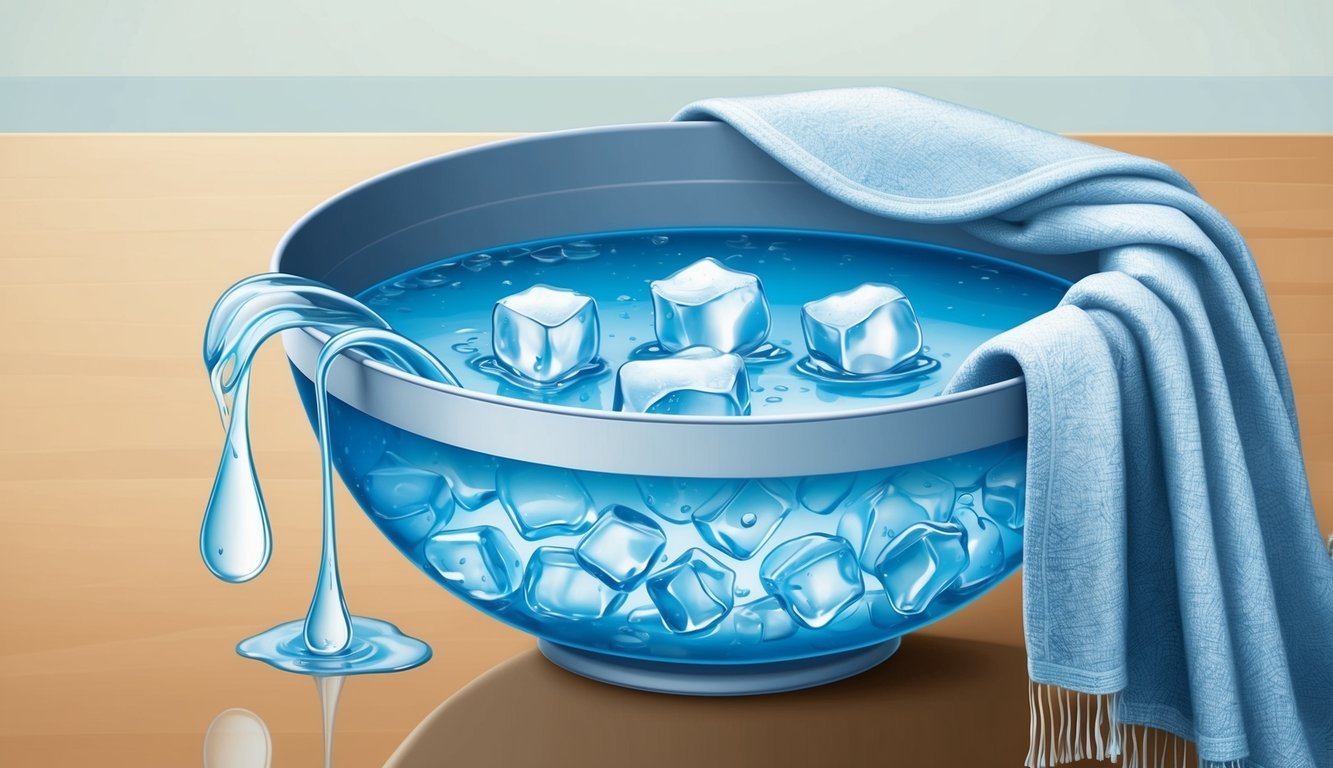When it comes to healing and recovery, I’ve learned that taking the right steps can make a significant difference. Supporting your body with proper nutrition, rest, and care is crucial for a quicker recovery journey. Whether you’re dealing with an injury, surgery, or illness, adopting some simple strategies can ease the process and help you feel better faster.

I find that even small changes can lead to noticeable improvements in how I recover.
It’s about listening to my body and understanding what it needs to heal effectively.
From dietary adjustments to mindful self-care practices, each tip can contribute to a smoother recovery experience.
1) Stay Hydrated
Staying hydrated is super important for healing.
Water helps my body function properly, supports nutrient transport, and aids recovery.
When I’m working out, I aim to drink about 16 ounces of water per hour.
For longer activities, electrolyte drinks can really make a difference.
After exercising, I make it a point to drink another 16 ounces within 30 minutes.
It’s crucial to replenish what I’ve lost.
I’ve learned that everyone’s hydration needs are different.
I try to pay attention to how my body feels and adjust accordingly.
Sometimes, I mix up my hydration routine by adding hydrating foods.
Fruits and veggies can be surprisingly effective in keeping me hydrated.
I’ve also experimented with homemade electrolyte drinks using water, salt, and sugar.
It’s a simple way to restore balance when I need it fast.
Overall, keeping my hydration levels up helps me feel better and speeds up my recovery.
Staying mindful about what I drink has become a part of my routine.
2) Eat a Balanced Diet
Eating a balanced diet is crucial for recovery.
I focus on including a variety of foods to provide essential nutrients.
This means not just the usual suspects, but also colorful fruits and vegetables.
Leafy greens like spinach and kale are great for boosting vitamins.
They help give my body the nutrients it needs to heal.
I also try to incorporate enough protein, which is vital after an injury or surgery.
For protein, I reach for foods like chicken, fish, and eggs.
These foods support tissue repair and help build muscle.
I make sure to include some dairy or plant-based alternatives for calcium too.
I keep an eye on my hydration.
Drinking enough water supports all bodily functions, especially healing.
I’ve found that keeping meals balanced can make a noticeable difference in how I feel during recovery.
Focusing on whole grains, like brown rice and quinoa, adds fiber and energy.
Overall, crafting meals with a mix of these elements keeps me energized and helps my body recover faster.
3) Get Plenty of Rest

I can’t stress enough how important rest is for recovery.
When I give my body time to heal, I notice a big difference in how I feel.
Quality sleep is crucial.
I aim for at least eight hours each night.
This helps my muscles recover and rebuild after workouts or injuries.
I try to establish a relaxing bedtime routine.
This can include reading, stretching, or even meditating to wind down.
Reducing screen time before bed also helps me get better sleep.
Rest isn’t just about sleep, though.
I also take breaks during the day.
Simple activities like sitting down and letting my body relax can work wonders.
Listening to my body is key.
If I feel fatigued, I know it’s time to take a step back.
Pushing through tiredness usually leads to injuries or burnout.
Incorporating rest days into my workout routine is essential too.
I make sure to alternate workouts and avoid overworking the same muscle groups.
This approach allows my body the time it needs to recover effectively.
4) Apply Cold Compresses

I’ve found that using cold compresses is a simple way to help with healing.
They effectively reduce pain and inflammation, especially after an injury.
It’s amazing how quickly this can lead to a sense of relief.
When I use a cold compress, I make sure not to apply it directly to my skin.
I always have a cloth or a towel in between to avoid frostbite.
I usually keep it on the affected area for about 15-20 minutes at a time.
I’ve noticed that cold therapy improves blood flow as it warms back up.
This helps deliver oxygen and nutrients to the tissues, supporting recovery.
For sore muscles after a workout, I often use ice packs or cold water baths to ease the discomfort.
I pay attention to my body and the timing.
Cold compresses work best right after an injury or strenuous activity.
With a bit of care, they’ve become a key part of my recovery routine.
5) Elevate the Affected Area

After an injury or surgery, I always make it a point to elevate the affected area.
This simple step can significantly help reduce swelling and promote healing.
Elevating my injury keeps the blood flow in check and minimizes trauma to the area.
I find it makes a noticeable difference in how I feel during recovery.
I usually use pillows or cushions to lift my foot or limb above heart level.
It’s comfortable and helps me stay relaxed while I heal.
Experts suggest that keeping the affected area elevated can relieve pain and enhance comfort.
I’ve definitely experienced less discomfort by doing this regularly.
So, whenever I’m resting or watching TV, I prop up my foot or arm.
It’s a small adjustment, but it really aids the healing process.
Plus, it feels good to give my body some extra care.
6) Use Over-the-Counter Pain Relievers
When I’m dealing with pain, over-the-counter (OTC) pain relievers can be a game changer.
I find that they’re effective for various aches, like headaches or muscle soreness, making recovery much smoother.
There are mainly two types of OTC pain relievers: nonsteroidal anti-inflammatory drugs (NSAIDs) and acetaminophen.
NSAIDs like ibuprofen or naproxen are great for inflammation and swelling.
If I need something for pain without inflammation, acetaminophen works well.
It’s important for me to use these medications wisely.
I always check the labels for dosage instructions and any potential side effects.
I also remember that not all pain relievers suit everyone, especially those with certain health issues.
For those moments when pain hits hard, having the right OTC pain reliever on hand gives me quick relief and helps me focus on healing.
Always worth keeping in mind to consult a healthcare provider if I’m unclear about which is best for my situation.
7) Practice Gentle Stretching

I find that gentle stretching can significantly aid in my recovery process.
It keeps my muscles flexible and promotes blood flow, which is essential for healing.
I like to incorporate stretches that target the areas I’ve worked during exercise.
Stretching helps to restore muscle length and function.
Just a few minutes of light stretching after my workouts makes a difference.
It’s important to listen to my body, though.
If I feel any pain while stretching, I scale back to a gentler version or rest for the day.
I focus on maintaining a relaxed pace and holding each stretch for about 15-30 seconds.
Incorporating stretches into my routine doesn’t have to be intensive.
Simple movements, like neck rolls and shoulder stretches, keep me balanced.
They help prevent stiffness and keep me feeling limber.
I’ve also noticed that consistent stretching contributes to my overall well-being.
It’s a great way to unwind and reconnect with my body after a tough workout.
8) Stay Positive and Relaxed

Staying positive during recovery can really make a difference.
I’ve found that a good mindset helps me heal faster.
When I focus on the good things, it lifts my spirits.
One simple trick I use is practicing self-compassion.
I remind myself that it’s okay to have ups and downs.
Acknowledging my feelings without judgment keeps negativity at bay.
Relaxation techniques also play a big role.
Simple breathing exercises or meditation can clear my mind.
Whenever I feel overwhelmed, I take a moment to breathe deeply and let go of stress.
I avoid dwelling on setbacks.
Instead, I try to visualize my progress.
Celebrating small wins keeps me motivated and reinforces a positive attitude.
Surrounding myself with supportive people is key too.
Their encouragement helps me stay upbeat.
I also engage in activities that bring me joy, whether reading, listening to music, or enjoying nature.
Staying positive isn’t about ignoring reality; it’s about choosing to focus on what can help me heal better.
This approach truly supports my recovery journey.
9) Follow Your Doctor’s Advice

I can’t stress enough the importance of following my doctor’s advice during recovery.
My healthcare provider has the experience and knowledge to guide me through the healing process effectively.
It’s essential to adhere to the prescribed medication and dosage.
Skipping doses or stopping too soon can hinder my recovery.
If I have any concerns or side effects, I should reach out to them right away.
I need to stay updated on my follow-up appointments.
These visits allow my doctor to monitor my progress and make necessary adjustments to my recovery plan.
My doctor might suggest specific activities, like gentle exercises or dietary changes.
Sticking to these recommendations can significantly improve my healing process.
Lastly, I should take any warnings seriously.
If my doctor advises rest, it’s crucial that I listen.
Pushing myself too hard can lead to setbacks.
Trusting my doctor’s expertise is vital for my recovery success.
10) Try Massage Therapy

I’ve found that massage therapy can be a game changer for recovery.
It helps to relax tight muscles and improve flexibility, which is essential after intense workouts.
Using techniques like Swedish massage, I notice less muscle tension and better circulation.
This boost helps my body recover more efficiently.
I also find that deep breathing and staying hydrated further enhance these benefits.
By following healthy circulation tips, such as regular movement and stretching, I can maintain better blood flow throughout the day.
These small habits make a big difference in how refreshed and energized I feel.
If I’ve had an injury, I like that massage can aid in healing as well.
Studies show that mechanical stimulation can enhance muscle regeneration.
This means my body might repair itself faster.
Staying hydrated after a massage is key for me, too.
It flushes out toxins and helps alleviate soreness.
I also try to avoid any heavy activities for a day to let my body adjust.
Incorporating massage into my routine has definitely supported my healing journey.
Whether it’s for relaxation or recovery, it feels beneficial.
Understanding the Healing Process
Healing from trauma and stress is a unique experience for each person.
Knowing the different phases of healing and the factors that influence recovery can be incredibly helpful.
Phases of Healing
The healing process typically unfolds over several phases.
Initially, I often find myself in a state of shock or denial.
It’s that moment when everything feels surreal.
As I progress, I enter a phase of processing my feelings, which can be overwhelming.
This is where I face strong emotions and possibly intrusive memories.
Eventually, I reach a phase of reconnecting with my life.
During this time, I work on integrating my experiences and coping strategies.
It’s important to celebrate small victories and set life goals, as it helps me regain a sense of purpose.
Factors Affecting Recovery Time
Several factors influence how quickly I heal.
Personal characteristics play a significant role; my resilience, coping skills, and support system can either expedite or slow the process.
External factors also matter, such as the type and severity of the trauma I experienced.
Access to professional help can significantly affect healing as well.
I’ve noticed that self-care practices—like mindfulness, exercise, and maintaining social connections—create a supportive environment for recovery.
Understanding these factors allows me to navigate my healing journey more effectively.
Lifestyle Considerations
Focusing on my lifestyle habits has been essential for promoting faster healing and recovery.
Two key areas that have made a noticeable difference for me are diet and nutrition, as well as maintaining proper hydration.
Diet and Nutrition
My diet plays a crucial role in how quickly I recover.
I pay attention to consuming nutrient-dense foods that aid in healing.
Here are some essentials I try to include:
- Leafy greens: Vegetables like spinach and kale are packed with vitamins and minerals.
- Proteins: Lean meats, fish, and legumes help repair tissues.
- Healthy fats: I opt for avocados and nuts for their anti-inflammatory benefits.
I also limit processed foods and sugar, which can hinder recovery.
By prioritizing these food groups, I feel I can boost my energy and support my immune system effectively.
Importance of Hydration
I can’t overlook staying hydrated.
Water is vital for almost every body function, especially healing.
When I prioritize drinking enough fluids, I notice improvements in my energy levels and cognitive function.
Here’s how I stay on top of hydration:
- Daily goal: I aim for at least 8-10 glasses of water.
- Track intake: Sometimes, I use an app to remind me to drink throughout the day.
- Include electrolytes: I add electrolytes post-exercise, whether through sports drinks or coconut water.
Maintaining proper hydration helps me recover faster and feel better overall.

